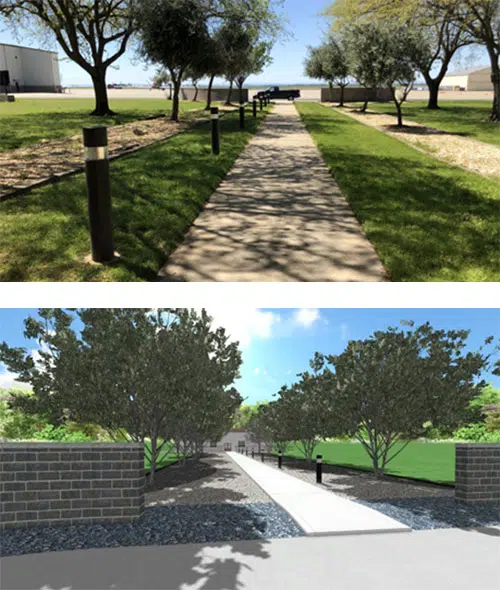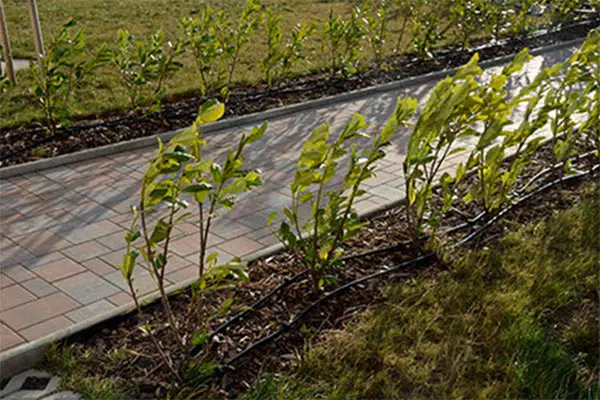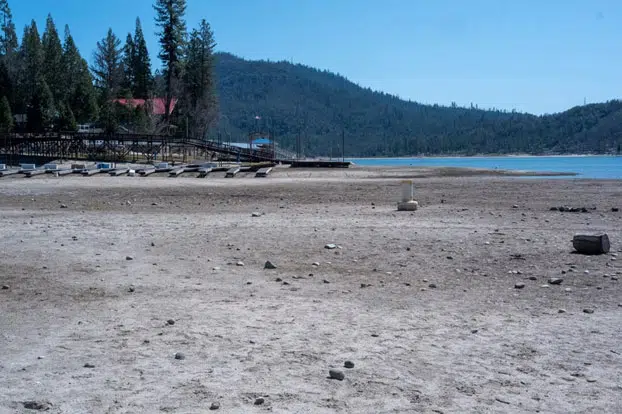Weather predictions for 2022 confirm what Californians already feel in their bones
Drought is here to stay—at least through the summer. Driving this reality home, California Governor Gavin Newsom issued an executive order in March calling for the State Water Board to consider “banning irrigation of non-functional turf in the commercial, industrial, and institutional sectors” except in rare situations. What will this ban mean to your landscaping and grounds maintenance operations, and how can organizations, nationwide, become responsible water stewards?
We’ve turned to the experts and, from their data and suggestions, compiled our top picks. Here are seven best practices in landscaping for 2022.
Tip 1: Begin with a plan
A commercial landscape that is both aesthetically pleasing and water-wise starts with a blueprint—one that includes everything from plant placement to surface materials to upkeep schedules. Beale Air Force Base in Northern California relies on just such a blueprint to maintain its grounds efficiently. Their detailed plan covers everything from the incorporation of existing trees to the placement of Sonoma Goldstone to the arrangement of new water-wise plants—including Mexican Bush Sage, Quadracolor Agave, Italian Cyprus, and Red New Zealand Flax.
Tip 2: Use mulch
In addition to being decorative, mulch adds an extra protective layer between plant roots and air. A weed-growth and erosion inhibitor, mulch also reduces evaporation—translating to less frequent watering.
One organization that’s making the most of mulch is the General Services Administration, a federal agency that manages a portfolio of buildings and grounds valued at more than $500 billion. At many of these properties, including a swath of land in downtown Sacramento, the GSA uses mulch to provide a fresh, manicured look and achieve its environmental impact goals.

Tip 3: Choose drought-tolerant plants
Before the drought, the use of native plants was enough to spare water. Now, however, commercial landscapes will thrive with plants that are both native and water-wise.
A drought-tolerant California landscape favorite is Ceanothus, which, with its bluish blossoms, is not only beautiful but is also a magnet for pollinators. And with so many varieties available, you can always find the right growth pattern to fit your needs.

Tip 4: Enhance landscapes with stone and gravel
Available in myriad colors and textures, stone and gravel make for innovative, drought tolerant designs. Think dry creek beds, Zen gardens, and geometric patterns—none of which need water.
This approach to water conservations has proven so successful that it’s been adopted by the U.S. military. At Beale Air Force Base, the turf surrounding the Ops building was recently replaced with stone and gravel of contrasting colors and varied textures. The result was a neat, manicured aesthetic that reflects the disciplined order of the Air Force and meets the base’s water conservation goals.

Tip 5: Consider using hardscapes
A cousin to stone and gravel, hardscapes refer to the built aspects of a landscape, including staircases, fireplaces, pavers, retaining walls, bridges, and more. Hardscapes are an ideal way to create space for outdoor meetings and “personal health” spaces for those who occupy nearby buildings.
Sacramento County Regional Sanitation District now boasts a simple outdoor “contemplation space.” Here, shady trees and colorful flowers surround benches and a walkway, making the space an ideal resting spot for employees who need a break from the demanding work of treating Sacramento County’s waste water.

Tip 6: Install smart irrigation systems
Such systems use moisture sensors to monitor growing conditions, and turn the water on or off as needed—and only where needed. These systems also tap into local weather data, which they use to adjust the watering schedule—so you’ll never find your sprinklers running during a rainstorm.
Smart irrigation can save you up to 15 gallons per watering cycle. Best of all, a smart system allows you to take a more hands-off approach, freeing you to focus on other grounds maintenance issues.

Tip 7: Let the grass grow a bit longer
If your property includes grass, consider keeping it on the long side. Slightly taller grass goes a long way to shade root systems and reduce evaporation, keeping soil moist for longer periods. Experts recommend setting mower blades to three inches.
Keep in mind too that grass species vary widely in their need for water. You can cut down on the cost of maintaining a lawn by choosing a grass that thrives with less hydration. Hybrid Bermuda, for example, is extremely well adapted to low water needs and can save a facility around 30 percent on irrigation water bills per year—while still providing a lush appearance.

Making the most of a scarce resource
The California drought is in its third year. Meanwhile, according to federal climate officials, early May’s first week found 45.01 percent of the U.S. and 53.77 percent of the lower 48 states in drought. Under these circumstances, water-wise strategies don’t just produce innovative, creative landscapes—they also demonstrate an organization’s commitment to environmental stewardship. That’s a value-added proposition that many of today’s environmentally conscious customers are looking for.





